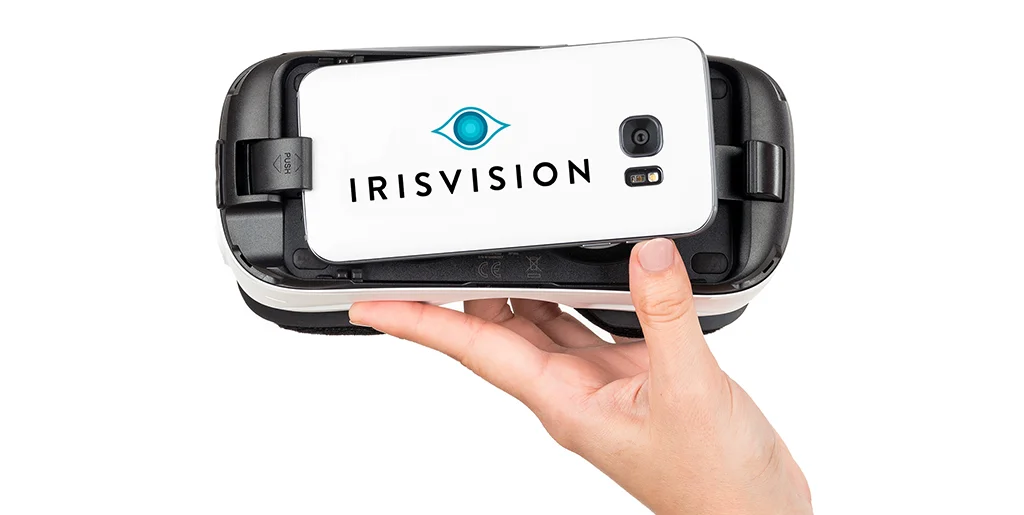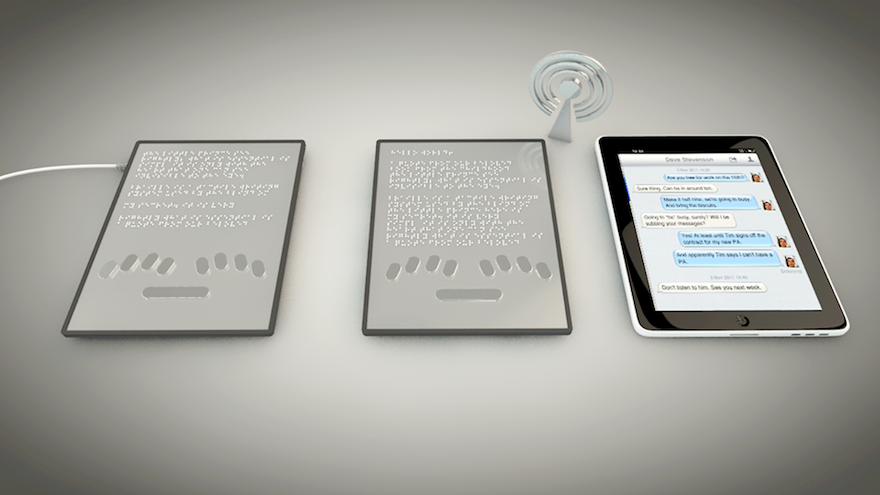Wearable Technology for Low Vision: A Revolution in Accessibility
Wiki Article
Discover Cutting-edge Tools Developed for the Visually Damaged
The advancement of ingenious tools for the aesthetically impaired stands for a substantial development in availability and independence. Technologies such as smart glasses with AI capacities and mobile applications developed to give auditory summaries are reshaping daily experiences for users. In addition, wearable tools that utilize haptic responses enhance environmental awareness, while contemporary Braille developments use brand-new methods to engage with message. As these devices remain to evolve, their influence on the lives of those with aesthetic problems raises crucial questions concerning the future of inclusivity and autonomy in numerous facets of life. What lies ahead in this technological landscape?Smart Glasses for Navigation

Smart glasses designed for navigation are transforming the means visually impaired people engage with their atmosphere. These sophisticated tools use a mix of electronic camera modern technology, expert system, and acoustic comments to offer real-time info regarding environments. By using barrier detection systems, wise glasses can signal users to possible hazards, enabling safer mobility in both familiar and unfamiliar settings.
The integration of GPS innovation better enhances navigating abilities, permitting users to receive acoustic directions as they relocate. This hands-free strategy not just promotes self-reliance yet also empowers aesthetically impaired people to navigate city landscapes with raised self-confidence. In addition, several wise glasses are furnished with attributes that recognize spots and road indications, offering contextual details that boosts the individual experience.
Furthermore, the growth of these devices is continuously progressing, with firms functioning to enhance the precision of item acknowledgment and increase the variety of navigational features. As clever glasses end up being extra inexpensive and available, they hold the prospective to considerably change life for visually damaged users. Inevitably, these cutting-edge tools stand for a crucial action towards inclusivity, offering boosted flexibility and a higher sense of freedom for individuals navigating the world around them.

Mobile Apps for Daily Living
Exactly how can mobile applications enhance the day-to-days live of aesthetically impaired individuals? Mobile applications are reinventing the method visually damaged individuals navigate their atmospheres, take care of daily jobs, and access information. These applications offer important assistance via different performances, cultivating self-reliance and improving high quality of life.Several ingenious mobile applications are made specifically for day-to-day living. Apps like Be My Eyes connect aesthetically impaired customers with sighted volunteers using video clip calls, enabling them to get real-time aid with jobs such as reading tags or browsing strange spaces. Seeing AI, created by Microsoft, uses artificial intelligence to describe surroundings, read message, and recognize things, efficiently transforming a smart device into a powerful tool for everyday help.
Furthermore, navigating apps tailored for the aesthetically damaged, such as Aira and BlindSquare, use audio-based instructions and environmental info, making it possible for individuals to traverse their environments securely and with confidence. Beyond navigation and prompt aid, mobile apps additionally sustain organization and job monitoring, with attributes that aid customers set suggestions, produce to-do lists, and track consultations. In recap, mobile applications function as indispensable sources, equipping aesthetically damaged people to lead more independent and meeting lives.
Wearable Technologies for Assistance
Empowerment through technology is increasingly apparent in the world of wearable tools made to assist aesthetically impaired people. These ingenious devices incorporate flawlessly into every day life, improving navigating and supplying crucial feedback to individuals. As an example, clever glasses equipped with video cameras can read and identify faces text aloud, enabling users to engage more confidently in expert and social setups.An additional noteworthy improvement is using haptic comments systems in wearable tools. These systems utilize resonances or various other tactile signals to share info regarding the individual's setting, such as obstacles or adjustments in surface, improving wheelchair and safety. Wearable innovations also consist of wristbands that connect to mobile phones, notifying customers to alerts with subtle resonances, hence boosting connectivity without reliance on visual hints.
As these innovations continue to progress, they are not just enhancing independence for visually damaged individuals but additionally fostering a higher sense of inclusion in culture. By bridging the void in between challenges faced in day-to-day living and the possibility for autonomy, wearable innovations function as essential devices in the pursuit for equality and empowerment for those with visual impairments.
Sound Description Tools
Audio description devices play a vital role in boosting access for aesthetically impaired people, offering them with the ability to engage with aesthetic media. Speech-to-text devices for low vision. These tools use narrated descriptions of eye glass places key visual components in movies, television shows, and live efficiencies, ensuring that customers can completely comprehend the context and feelings shared through visualsSound description can be integrated right into numerous systems, consisting of streaming solutions, movie theater testings, and live theater. Several preferred streaming services now consist of audio summary as an ease of access feature, allowing visitors to select it quickly. In enhancement to conventional media, specialized applications also exist, providing audio descriptions for weblink art exhibits, galleries, and various other social occasions.
The effectiveness of audio summary hinges on the skill of the narrators, who must communicate visual details succinctly without taking away from the initial sound. Technologies in this field are also leading the way for more individualized experiences, where customers can readjust the degree of detail and pacing according to their preferences.
Braille Innovations and Devices
Braille tools and developments have considerably transformed the means visually impaired people communicate with text and information. Modern developments have actually led to the advancement of versatile devices that improve literacy and freedom amongst users.
In addition, portable Braille notetakers incorporate standard Braille input with modern-day capabilities, helping with note-taking, scheduling, and file modifying on the go. OCR devices for the blind. These small gadgets usually feature text-to-speech abilities, bridging the gap in between Braille and auditory information
On top of that, innovative Braille printers have actually arised, permitting customers to create Braille labels, papers, and academic materials effectively. This availability promotes higher participation in educational and specialist settings, eventually promoting inclusivity.
Additionally, research right into smart Braille innovations remains to increase. Gadgets that include artificial intelligence are being checked out to give real-time navigating help and contextual info, enhancing the customer experience in diverse settings. On the whole, these innovations show a dedication to equipping visually damaged people through technology, guaranteeing they can easily accessibility the original source and involve with the world around them.

Verdict
The innovation of innovative devices for the aesthetically impaired significantly boosts self-reliance and lifestyle. Smart glasses, mobile applications, wearable technologies, audio summary tools, and Braille advancements jointly equip people by giving essential navigating support, environmental understanding, and improved analysis experiences. These innovations not only foster better addition yet additionally promote freedom in daily activities, eventually adding to an extra accessible and equitable culture for visually damaged individuals. Proceeded development in this field holds guarantee for more enhancements.As clever glasses become a lot more cost effective and obtainable, they hold the prospective to dramatically change daily life for visually impaired individuals. Mobile apps are revolutionizing the means visually damaged individuals browse their environments, manage day-to-day jobs, and gain access to info. Apps like Be My Eyes link visually damaged customers with sighted volunteers via video phone calls, enabling them to get real-time assistance with jobs such as reviewing tags or browsing strange areas.Additionally, navigating apps tailored for the aesthetically damaged, such as Aira and BlindSquare, supply audio-based instructions and environmental details, allowing users to traverse their environments securely and with confidence.The development of cutting-edge tools for the aesthetically impaired considerably boosts self-reliance and quality of life.
Report this wiki page